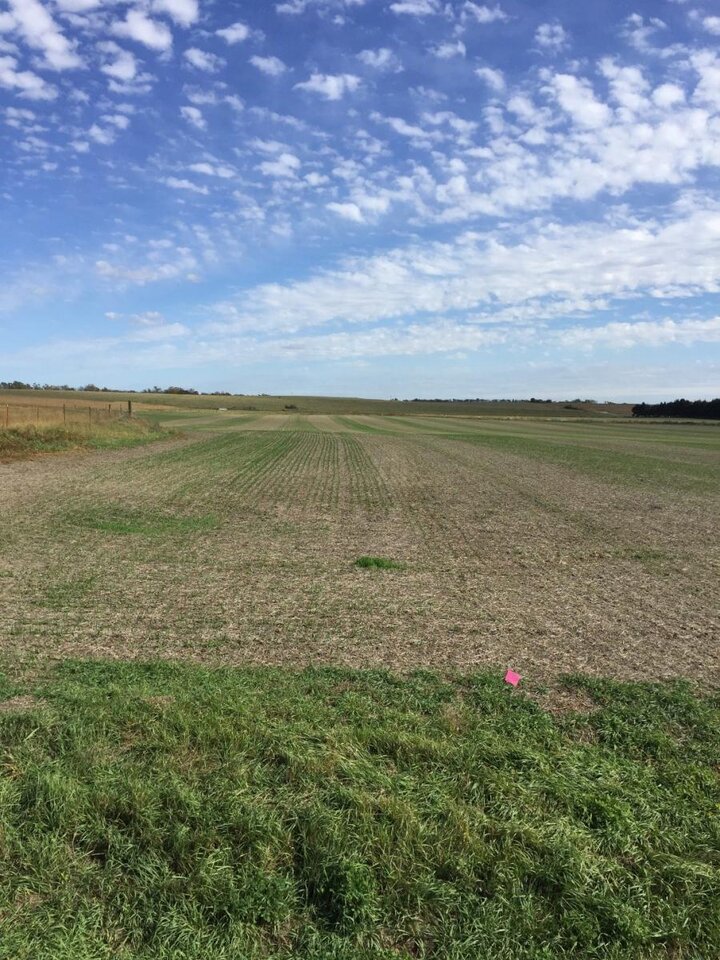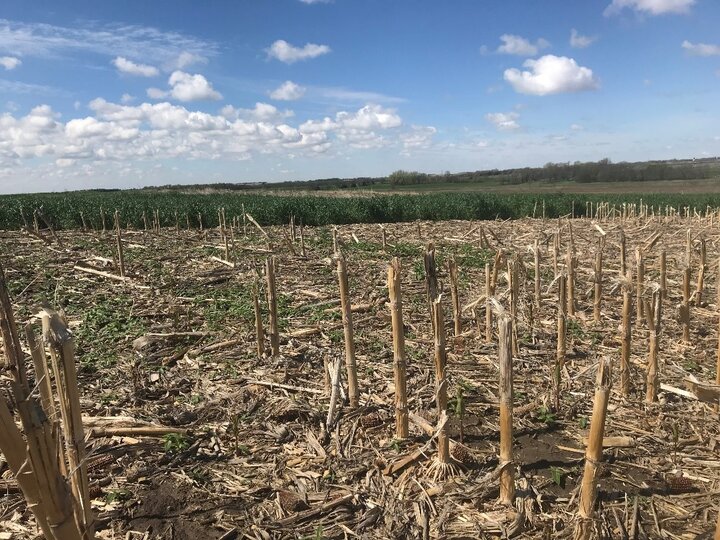How can we manage cropland to improve soil health? To address this common question from producers, conservationists, and government representatives, a statewide partnership among Nebraska producers, the University of Nebraska-Lincoln, and the Natural Resources and Conservation Services (NRCS) was launched in 2016. The Soil Health Demonstration Initiative offers research and technical assistance to encourage farmers to adopt soil health practices such as
Learn More in ...
- Why Growers are Adopting Practices to Build Soil Health
- Soil Health Initiative: Demonstrating Soil Health Management Across Nebraska
- no-till farming,
- cover cropping,
- extended crop rotations, and
- integrating crops and livestock.
Through this project more than 17 farmers are conducting in-field soil health management comparisons on more than 1,700 acres across Nebraska.
Finding Soil Health Solutions that Work for Nebraska Farmers

To establish a network of demonstration sites, Nebraska farmers interested in conducting system-level soil health experiments applied to the Nebraska NRCS Soil Health Initiative to add an on-farm research component to their operation. Although each collaborator is interested in addressing a specific soil-health question, common and primary concerns are soil compaction, nutrient cycling, water quality, water/wind erosion, carbon storage, and microbial activity. The farmers approved for this initiative are conducting strip trials on:
- Cover crop mixture comparisons. Many farmers have expressed interest in planting multispecies cover crop (CC) mixtures to evaluate the suitability of several cover crop species and enhance ecosystem services. Cover mixtures comprised of high and low C/N ratios, winter-hardy and winter-terminated cover crops, and single species and multispecies cover crops have been tested.
- Cover crop seedling methods and planting dates. The relatively small window of opportunity for seeding cover crops in the fall has led growers to adaptive management practices that would extend the cover crop season without delaying the planting of a cash crop (e.g., corn and soybean). Interseeding cover crop seeds into the standing cash crop with high-clearance equipment or aerial seeding equipment can be an option for farmers interested in including cover crops in their system. Strip trial comparisons between interseeded cover crops into corn at the V4 to V6 growth stage versus dormant-seeded cover crops as well as broadcast versus drilled cover crops can bring farmers more data on expanding the cover crop growing window.
- Cover crop termination timing and methods. Timing of cover crop termination is crucial to its success in delivering soil ecosystem functions. Terminating the cover crop just prior to planting the cash crop can allow more time for growth and biomass accumulation as compared to earlier termination (e.g., weeks or months before cash crop planting). Cover crop termination timing effects on crop yield and soil health have been investigated and this information can help improve our understanding of ecosystem benefits.
- Livestock integration. Some farmers are also moving beyond the traditional corn-soybean rotation by planting cover crops and incorporating cattle. Grazing cover crops can offer a return on investment and soil health benefits. Grazing and haying cover crops may increase farm profits, but the implications on soil health deserve further attention. Determining the impact of cattle grazing cover crops on soil properties under different soil types and crop systems can help farmers identify opportunities for expanded cover crop residue use.

Findings from these multiple long-term in-field management comparisons will help
- farmers and crop scientists strategically manage the field and begin to identify the optimal environment and management combinations for improved soil health and crop production;
- ecologists and conservation groups to explore practices that minimize soil erosion and maximize soil carbon sequestration; and
- economists to identify profitable and regenerative agricultural pathways to boost farmers’ income and productivity.
This initiative also can provide valuable information to help crop modelers refine useful tools that predict climate conditions and pave the way for a common framework for soil health assessment.

